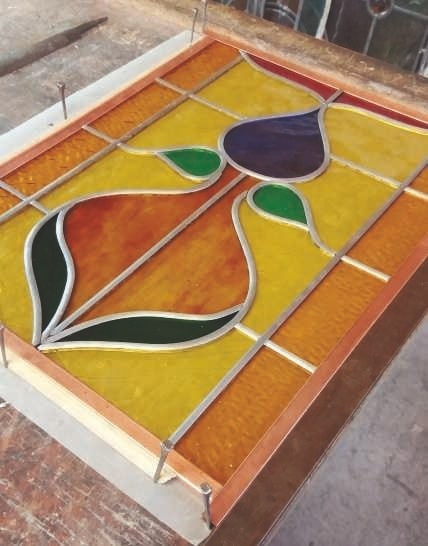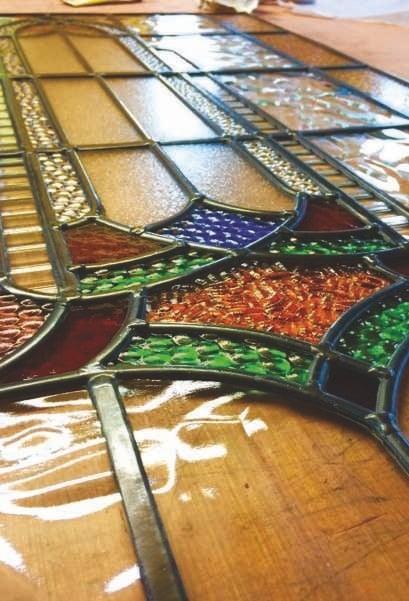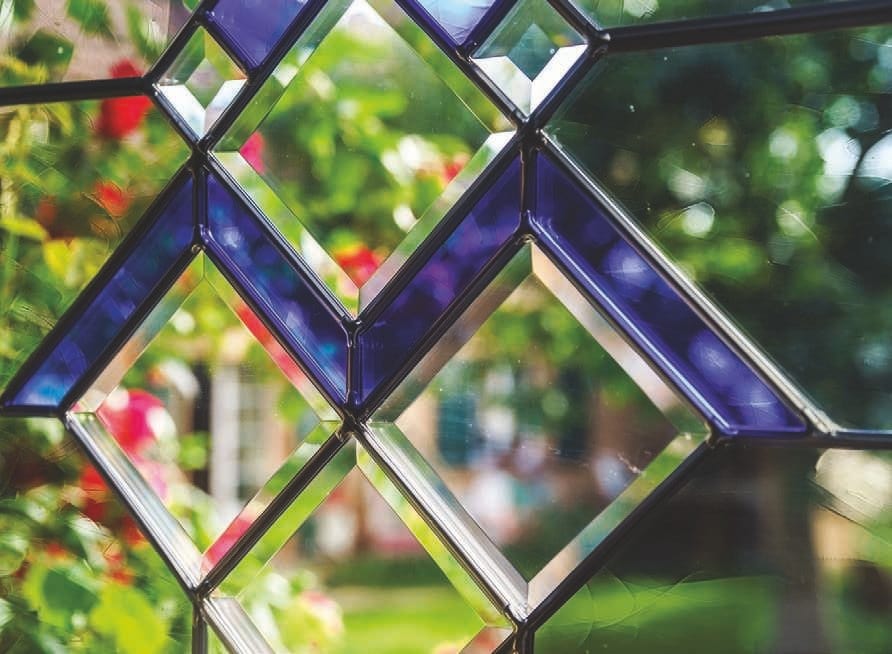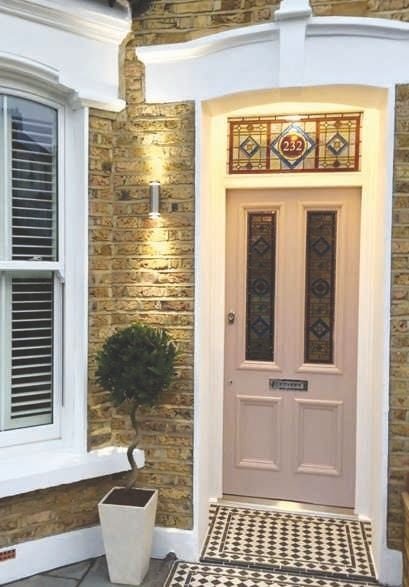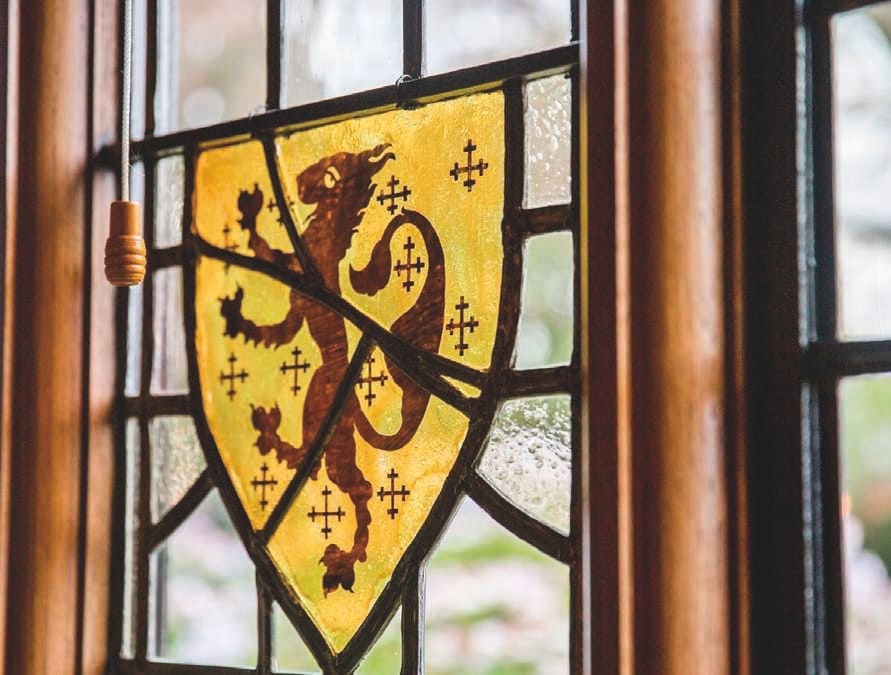Traditional Leaded Lights
Leaded lights are one of the oldest techniques for glazing still in use today. Looked after properly, leaded lights can last hundreds of years, so routine maintenance is essential for preservation.
Leaded lights consist of small panes of glass (quarries) joined together using lead cames which are shaped like an H-Section to hold the pane. Lead’s material properties are soft, flexible and affordable. Which made it a perfect choice for early glazing.
Copper, brass or lead ties are soldered into the rear of the cames which are then fastened to the main window bars to provide structural strength to the panels. Glazing cement (traditionally consisting of linseed oil, whiting, lamp black and white spirit) is installed under the flanges of the lead came to secure the quarries in place.
This glasswork technique came about due to limitations in early glass production. Only small pieces of glass could be produced, and as such a technique needed to be developed to create larger glazed spaces.
Traditional leaded light windows differ slightly from stained glass. Though the came glasswork technique allowed for both to be produced. Stained glass windows, commonly found in ecclesiastical settings and grand houses, included extra production processes such as painting and firing. Came glasswork is the process of joining cut pieces of art glass through the use of came strips or foil into picturesque designs in a framework of soldered metal. Came is made of different metals, such as lead, zinc, brass and copper. The metal came selected generally depends upon the size, complexity and weight of the project. As an alternative to came,
This time-consuming design process was far too expensive for domestic settings and so traditional plain leaded light windows, have been an architectural feature in UK homes for centuries.
As glass production techniques developed in the 17th century and larger panes of ‘crown’ glass were produced instead of traditional broad or cylinder glass, cutting lights into diamond shapes minimised on waste, and so remained popular.
The development of sash windows in the 18th century led to leaded lights falling out of fashion, but popularity returned with Gothic Revival architecture in the late 19th century, the Art Nouveau period pre-World War I and after World War II when mock Tudor style was prevalent.
Interestingly, medieval lead came work windows are sturdier than their successors in the 19th and 20th centuries.
Care & Maintenance
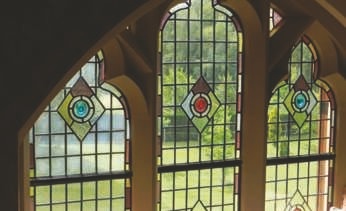
Keeping a close eye on leaded light windows and developing a cleaning routine will
Regular Inspection
A little movement is to be expected in old leaded lights and is not a major concern. However, prominent bows, raised sections, buckles or bellies of the whole window can result in original
Things to look out for:
- Each came should be flat, smooth and straight at the edges. Check for bowing, distortion or furrows near the edges.
- Check that the ties are attached to both the panel and the saddle (window) bar. Detached ties can lead to movement and glass breakages.
- Check the window frames periodically for corrosion, and deterioration of timber. The inherent expansion of oxidised metals and movement of timber or stone surrounds can create serious issues for leaded lights.
- Ensure the putty or cement holding the quarries into the came-work is still sound and providing a weather tight seal.
Cleaning & Maintenance
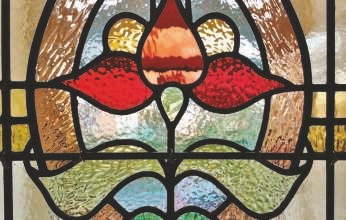
Leaded lights should be cleaned gently both internally and externally with de-ionised water and cotton wool. Don’t scrub or use any abrasive cleaning products or cloths as
Casement window frames can be cleaned gently with soft cloths or a brass brush. Do not to use any abrasive cream or solvents and ensure you dry the metalwork completely after cleaning.
Typical Restoration Techniques
As always, preserving the existing fabric and restoration with traditional techniques is favoured. Old glass is becoming increasingly rare. Fortunately, saving original glass from run-down lead cames is usually achievable. Where replication is necessary, replacement with historic traditionally crafted glass will depend primarily on the
The same applies for lead work, which can usually be repaired or
Copy supplied by Dorothea Restorations
www.dorothearestorations.com
Posted in: Property
